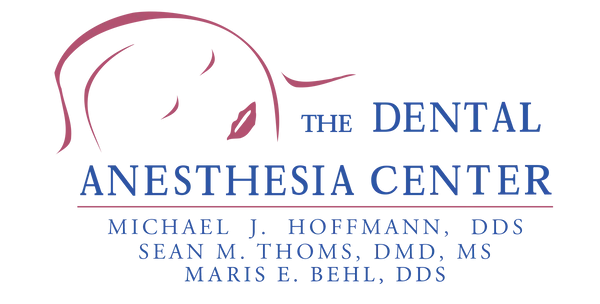The dentist says you have a crossbite – what does that mean? It’s a common dental issue. While it won’t straighten out on its own, treatment options are available to correct it.
A crossbite, sometimes called an underbite, is a form of malocclusion. It means your teeth don’t line up correctly when you close your mouth. It can affect one or two teeth or a group of teeth, like your front or back teeth.

There are various treatments for crossbites and underbites. At The Dental Anesthesia Center, we can help you understand what causes it and how to treat this dental problem.
Types of Crossbites
With a normal bite, your upper teeth should be wider and sit on the outside of your bottom teeth. Each of your upper teeth touches the matching lower teeth so that the force when you chew is evenly distributed across your mouth.
If you have a crossbite, movements such as chewing and clenching cause irregular wear and damage to your teeth and jaw. There are two main types of crossbite:
- Posterior crossbite – This occurs when your upper back teeth sit inside your bottom teeth. It may happen on only one side of your mouth or both sides. This type of crossbite affects a more significant percentage of the population and is relatively easy to correct.
- Anterior crossbite – This is when one or more of your upper teeth sit behind your lower front teeth. This is unlike an underbite which occurs when all of your top teeth are behind your bottom teeth.
Causes of a Crossbite
There are various causes of a crossbite. They are typically caused by skeletal or dental issues or a combination of the two. Tooth growth delays, habits, upper airway problems, problems with bone structure, or genetics can cause it.
Specific causes of crossbites include the following:
- Tongue thrust during swallowing
- Finger or thumb sucking
- Baby teeth that don’t fall out
- Early baby tooth loss
- Teeth too big to fit well for proper alignment
- Small jaw – teeth can’t fit all your teeth
- Cleft lip or palate
- Chronic mouth breathing
Our teeth and bones can be pushed and twisted out of shape for various reasons. When teeth are missing or come in late, other teeth shift and drift, which causes alignment and structural issues.
How a Crossbite is Treated
The earlier the treatment, the better. A crossbite doesn’t straighten out on its own, so treating it early on, if possible during childhood, is suggested. However, a crossbite can be corrected at any age.
If your child has a crossbite, you’ll want to get them into an orthodontist as early as age 7 or 8 to begin treatment. The type of treatment used will depend on the severity and cause of the crossbite. Common crossbite treatments include:
- Braces
- Palatal expander
- Clear aligners
- Fixed palatal crib
- Removable appliances
- Myofunctional therapy
If you have questions about your teeth or treatment, contact The Dental Anesthesia Center. We value our patient relationships, making it our priority to deliver the gentle dental care you deserve from sedation dentists in St. Louis.
Call Us Today
The first two board-certified Dentist Anesthesiologists in the state of Missouri.

